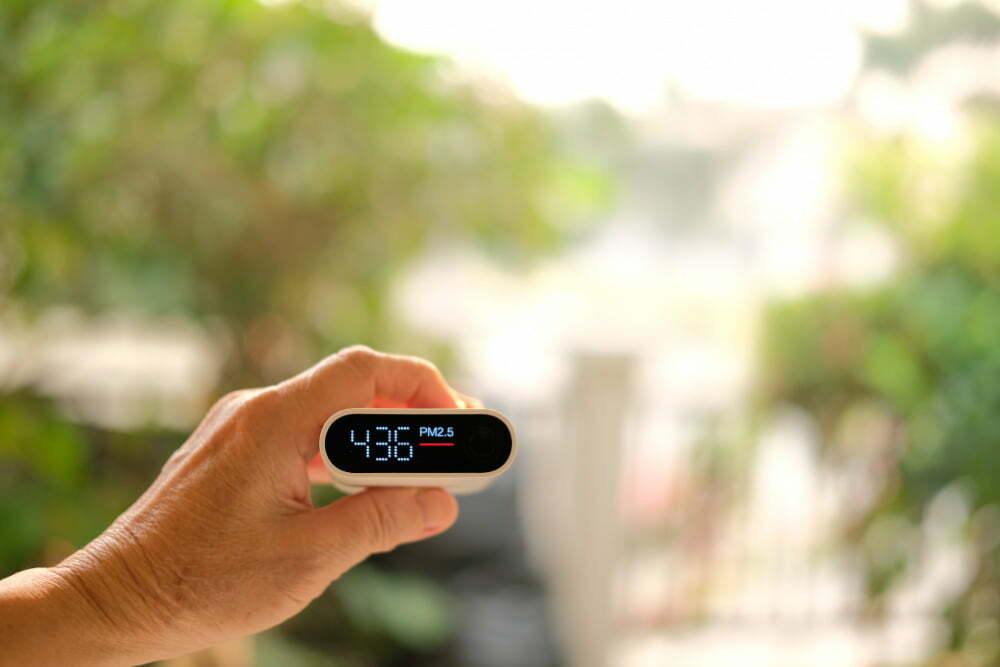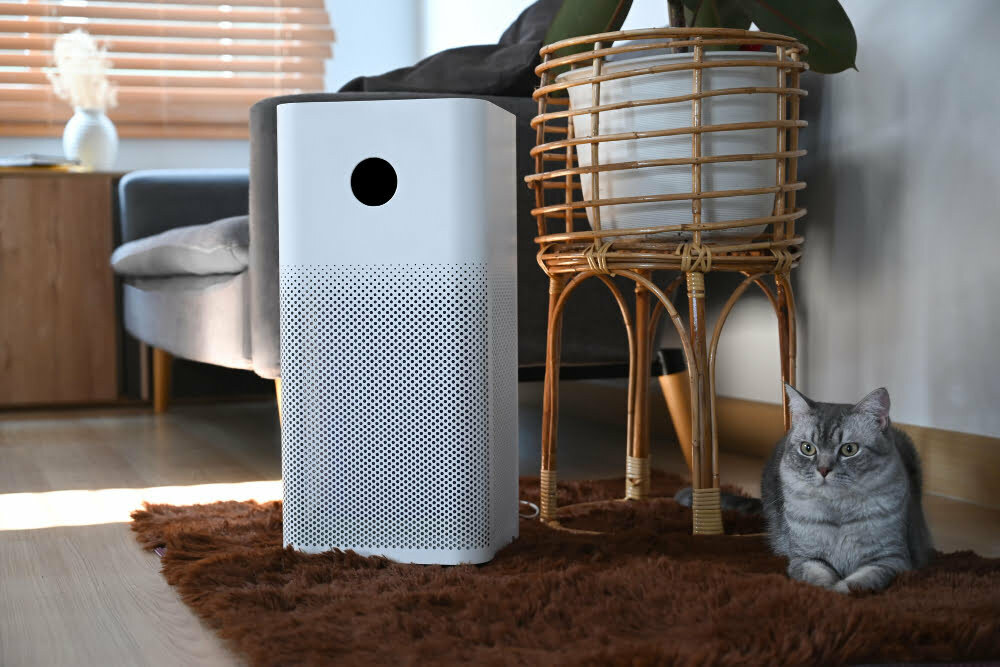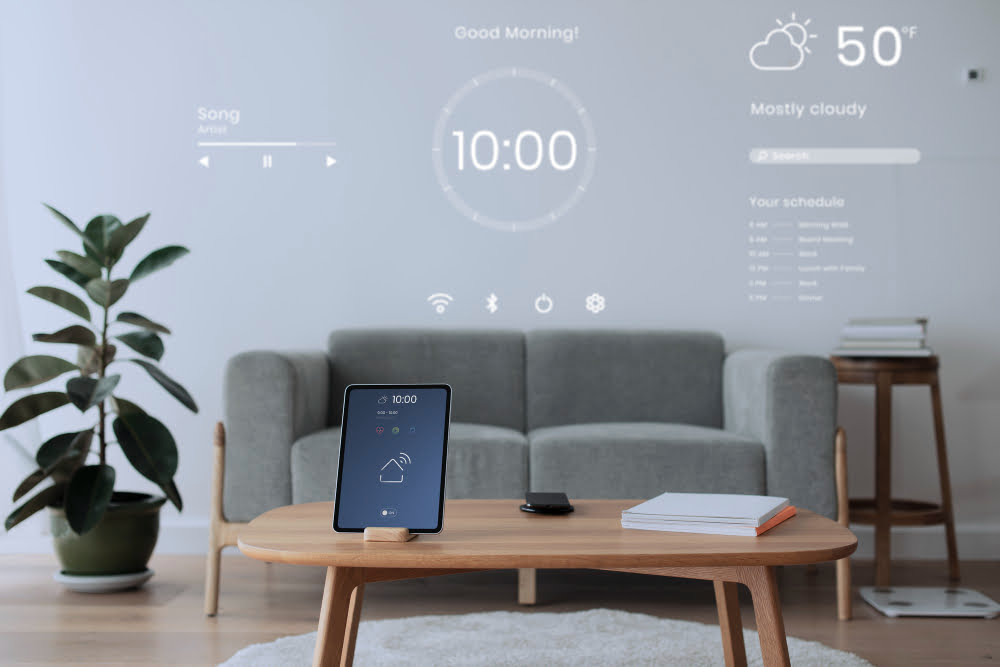Air quality monitors and smart home devices play a crucial role in actively maintaining healthy indoor spaces, ensuring that you breathe easy and live better.
As a child, I remember my grandmother always opening the windows and doors of her home every morning to let in fresh air. She believed that it was essential for good health and well-being.
However, as we fast forward to today’s modern homes, we often keep our doors and windows closed to maintain a comfortable temperature inside. While this may seem like a luxury, it can come at the cost of our health.
Indoor air pollution is becoming increasingly problematic in today’s world due to various factors such as inadequate ventilation, building materials, cooking appliances, and cleaning products. The sad truth is that most people spend up to 90% of their time indoors without realizing the potential harm caused by poor indoor air quality.
Fortunately, advancements in technology have made it possible for us to take control of our indoor environment using smart home devices and air quality monitors. In this blog post, I will delve into how these tools can help us maintain healthy indoor environments while sharing some personal experiences along the way.
So buckle up and get ready for an exciting journey into the world of smart homes and clean air!
The Invisible Threat: Indoor Air Pollution

As I mentioned earlier, indoor air pollution is a growing concern in today’s world. The problem with indoor air pollutants is that they are often invisible to the naked eye, making it difficult for us to detect them.
These pollutants can cause various health problems such as allergies, respiratory issues, and even cancer.
I remember when my friend Sarah moved into her new apartment last year; she started experiencing frequent headaches and fatigue. She couldn’t figure out what was causing these symptoms until she installed an air quality monitor in her home.
To her surprise, the device detected high levels of volatile organic compounds (VOCs) emitted by some of the furniture pieces in her apartment.
This incident made me realize how crucial it is to have an understanding of our indoor environment’s quality and take necessary measures to improve it using smart home devices like air purifiers or humidifiers.
In this article, we will explore how these devices work together with advanced technology like artificial intelligence (AI) algorithms that analyze data from sensors placed throughout your house or office space – providing real-time feedback on your environment’s overall health status!
Breathing Easy: Air Quality Monitors Explained

Breathing easy is something we all take for granted until it becomes a struggle. As someone who has suffered from allergies and asthma, I know firsthand how important it is to maintain good indoor air quality.
This is where air quality monitors come in handy.
Air quality monitors are devices that measure the levels of pollutants in the air, such as particulate matter (PM), volatile organic compounds (VOCs), carbon dioxide (CO2), and humidity levels. They provide real-time data on the current state of your indoor environment so you can make informed decisions about how to improve it.
For instance, if you notice high PM levels during cooking or cleaning activities, an air purifier with a HEPA filter could help reduce these particles’ concentration in your home’s atmosphere. Similarly, monitoring CO2 concentrations can help ensure adequate ventilation by indicating when windows should be opened or closed.
With smart home technology integration becoming more common than ever before, many modern-day homeowners have started using smart thermostats that automatically adjust temperature settings based on occupancy patterns and outdoor weather conditions while also monitoring humidity levels inside their homes through sensors placed throughout their living spaces.
Air Quality Monitors are essential tools for maintaining healthy indoor environments because they allow us to monitor pollutant concentrations continuously and make informed decisions about improving our homes’ overall healthiness level!
Smart Home Devices: A Modern Solution for Clean Air

Smart home devices have revolutionized the way we live, and they are now playing a crucial role in maintaining healthy indoor environments. These devices can monitor air quality levels, control ventilation systems, and even purify the air inside our homes.
As I grew older and moved into my own apartment, I realized that opening windows was not always an option. Living in a busy city meant that outdoor pollution could easily seep into my living space if left unchecked.
That’s when I decided to invest in smart home devices to help me maintain clean air indoors.
I started with an air purifier that automatically adjusted its settings based on real-time data from an integrated sensor. This device helped me eliminate harmful pollutants such as dust mites, pet dander, and pollen from the indoor environment while also reducing unpleasant odors.
Next up was a smart thermostat which allowed me to regulate temperature levels efficiently without compromising on energy consumption or comfortability. The device learned my preferences over time by analyzing patterns of usage so it could adjust accordingly for maximum efficiency.
Overall these smart home devices have made it possible for me to create a comfortable living space while ensuring optimal health benefits at all times – something which would not be possible without them!
Top 5 Must-Have Smart Home Devices for Healthy Homes

Now that we understand the importance of maintaining healthy indoor air quality, let’s take a look at some must-have smart home devices that can help us achieve this goal.
1. Air Quality Monitors: These devices measure various pollutants such as PM2.5, VOCs, and CO2 levels in real-time and provide alerts when levels exceed safe limits.
2. Smart Thermostats: These thermostats not only regulate temperature but also monitor humidity levels to prevent mold growth and maintain optimal comfort for occupants.
3. Air Purifiers: HEPA filters are essential for removing allergens such as dust mites, pet dander, pollen from the air we breathe indoors.
4. Humidifiers/Dehumidifiers: Maintaining proper humidity levels is crucial to prevent respiratory problems caused by dry or damp environments.
5. Smart Cooking Appliances with Ventilation Systems – Cooking releases harmful gases like nitrogen dioxide (NO₂) which can be detrimental to our health if not properly ventilated out of our homes.
By incorporating these smart home devices into your living space you will have greater control over your indoor environment while ensuring a healthier lifestyle for yourself and loved ones. Remember my grandmother who always opened her windows every morning? Well now with these tools at hand you don’t need to sacrifice comfort or safety anymore!
Real-Life Stories: Transforming Homes With Technology

As a blogger who writes about home air quality, I have come across many stories of people transforming their homes using technology. One such story that stands out is that of my friend, Sarah.
Sarah had been experiencing allergies and respiratory issues for years without knowing the cause. She tried everything from changing her diet to taking medication but nothing seemed to work.
It wasn’t until she invested in an air quality monitor and smart home devices that she realized the root cause of her health problems was poor indoor air quality.
With the help of these tools, Sarah was able to identify areas in her home where pollutants were present and take action accordingly. She installed an air purifier in her bedroom which significantly improved the overall indoor environment’s cleanliness.
Moreover, by connecting all smart devices through a central hub like Amazon Alexa or Google Home Assistant, Sarah could control them remotely using voice commands or smartphone apps even when away from home! This made it easier for her to maintain healthy indoor environments while juggling other responsibilities like work and family life.
Real-life stories like this demonstrate how technology can play a crucial role in maintaining healthy indoor environments by providing us with valuable insights into our homes’ inner workings while also making it easier than ever before to take action against harmful pollutants!
The Future of Indoor Environments and IoT Integration

As we continue to embrace technology in our daily lives, the future of indoor environments is looking brighter than ever. With the integration of IoT (Internet of Things) devices, we can now monitor and control various aspects of our homes remotely.
This means that even when we’re away from home, we can still ensure that our indoor air quality is at its best.
Imagine being able to receive real-time updates on your smartphone about the air quality levels in your home or office. Or having a smart thermostat that adjusts itself based on your preferences and outdoor weather conditions while also taking into account factors such as humidity levels and air quality.
The possibilities are endless with IoT integration in maintaining healthy indoor environments. We could see more advanced sensors installed throughout buildings to detect harmful pollutants such as carbon monoxide or radon gas before they become a serious health hazard.
As someone who has experienced firsthand how poor indoor air quality can affect my health, I am excited about what the future holds for us all thanks to these innovative technologies. By embracing them today, we are paving the way for healthier living spaces tomorrow – one smart device at a time!
Read Also
- Air Quality Monitor Buying Guide: Choose the Right Model for Your Home
- Indoor Air Quality Monitor Buying Guide: Find the Best for Your Home
- The Role of Ventilation and Air Exchange in Maintaining Healthy Indoor Air
- Indoor Air Quality: Understanding Its Importance and Improvement Tips
- Air Quality Sensor Buying Guide: Find the Right One for Your Needs